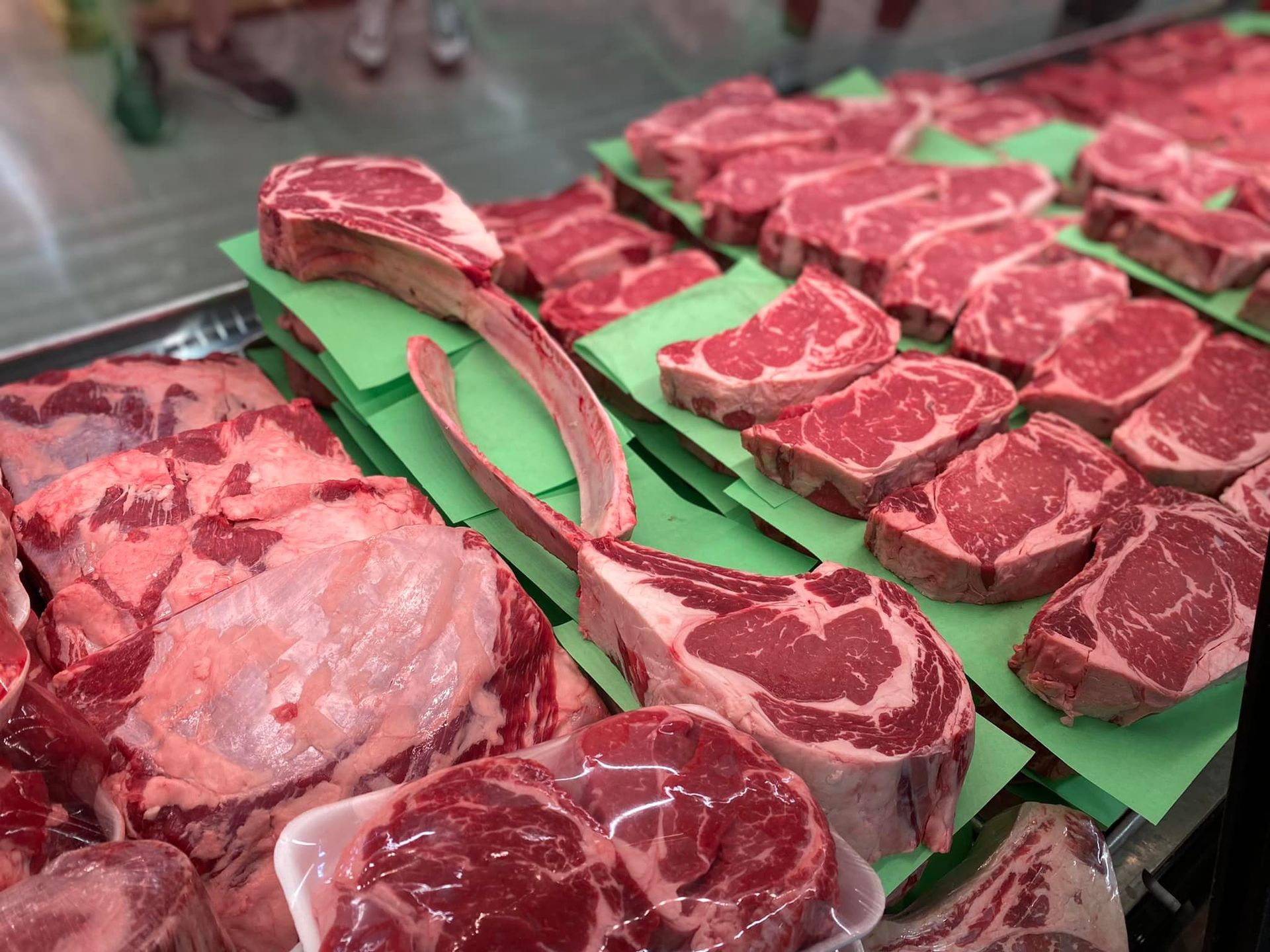Discover the Local Flavor at Bagley Farms Meat Market Edwardsville IL: Fresh and Delicious
Discover the Local Flavor at Bagley Farms Meat Market Edwardsville IL: Fresh and Delicious
Blog Article
Reveal the Art of the Butcher's Cut in a Modern Meat Market
In the ever-evolving landscape of contemporary meat markets, the butcher's cut has transcended its typical roots, combining olden workmanship with contemporary practices. What genuinely sets the modern-day butcher apart is their ability to build a deeper link between customers and the beginnings of their meat.
Development of Butchery Techniques

The mid-20th century saw butchery strategies additionally improved by clinical understandings into muscle biology and meat aging, enhancing both inflammation and taste. Developments like vacuum product packaging and refrigeration expanded item shelf-life, enabling butchers to diversify offerings and boost top quality control. This period also noted the increase of specific equipment, such as band saws and meat slicers, which raised accuracy and efficiency in meat handling.
Digital systems now help in monitoring animal provenance and maximizing cuts to meet certain customer preferences. In addition, a revival in artisanal butchery has actually emerged, mixing traditional skills with modern-day knowledge to cater to customers looking for ethical and lasting meat alternatives.

Understanding Meat Cuts

Comprehending the ins and outs of meat cuts is vital for both butchers and consumers looking for quality and worth. For butchers, exact cuts reflect ability and respect for the craft, ensuring marginal waste and ideal return.
The main categories of meat cuts consist of primal, sub-primal, and retail cuts. Primal cuts, such as the loin, rib, and chuck, are the large areas initially divided from the carcass. Butchers then damage these down further right into sub-primal cuts, before lastly creating retail cuts available to customers, like ribeye or tenderloin. Each stage needs careful interest to physiological structure and muscular tissue structure.
Recognizing muscle make-up is essential; muscular tissues used much more regularly by the pet tend to be tougher and are best fit for slow-moving cooking techniques, while less-used muscular tissues, like those found in the loin, are much more tender and suitable for cooking or roasting. Familiarity with these differences encourages consumers to make informed options, improving their cooking undertakings.
Selecting Quality Meat
Selecting the best meat includes greater than just picking a visually appealing item from the screen. The art of choosing top quality meat calls for a critical eye and understanding of certain qualities that symbolize freshness and excellence. Pay interest to the color; beef should have an intense, cherry-red color, while lamb must exhibit a soft pink tone, and pork a pale pink. This shows the meat is fresh and hasn't been subjected to oxygen for too long.
Secondly, consider the marbling, which describes the white streaks of fat within the muscle mass. Correct marbling is a crucial indicator of inflammation and flavor, as it thaws during food preparation, enhancing the meat's juiciness. Remember, greater marbling commonly correlates with exceptional quality cuts, such as USDA Prime.
Appearance is another essential element; meat needs to really feel firm to the touch, not slimed or overly soft. Furthermore, be mindful of the fragrance. Fresh meat needs to have a clean, Get More Info neutral scent, free from any kind of sour or repulsive odors.
Coupling Cuts With Cooking Techniques
Efficiently matching cuts of meat with the ideal cooking techniques is crucial for accomplishing ideal taste and texture. Various cuts differ in inflammation, marbling, and connective tissue material, each calling for specific techniques to unlock their capacity. Tender cuts like filet mignon and continue reading this ribeye, with their inherent marbling, benefit from high-heat, quick-cooking techniques such as cooking or pan-searing. These methods improve the meat's all-natural tastes and make certain a juicy coating.
On the other hand, harder cuts like brisket and chuck roast are abundant in collagen, which damages down right into gelatin when cooked slowly. These cuts are optimal for braising or sluggish roasting, enabling the meat to tenderize over time and develop deep, complex tastes. Cuts such as short ribs and pork shoulder get on well with slow-cooking approaches, where expanded cooking times transform their durable textures right into delicious dishes.
Lamb shanks and oxtail, which call for prolonged food preparation to tenderize, are ideal prospects for cooking or slow-moving simmering. These approaches coax out abundant, passionate flavors while preserving dampness. By recognizing the distinct attributes of each cut, chefs and home chefs alike can raise their culinary productions, ensuring each recipe Visit This Link is both pleasing and remarkable.
The Butcher's Function Today
Navigating the developing landscape of the modern-day meat market, the butcher's duty today expands beyond plain preparation of cuts. Contemporary butchers are culinary craftsmens, educators, and supporters for sustainable techniques. They link the gap in between the farm and the fork by making certain honest sourcing, understanding pet husbandry, and prioritizing openness in the supply chain. This shift shows the growing customer demand for top quality over quantity, where provenance and pet welfare are extremely important.
Along with crafting specific cuts, butchers now involve directly with clients, supplying cooking guidance and customizing selections to fit specific needs and choices. Their experience in meat aging, marbling, and flavor profiles encourages consumers to make educated choices, boosting their culinary experiences. This individualized service exhibits the butcher's evolving role as a relied on expert in the kitchen.
Furthermore, butchers are crucial in minimizing waste, using entire animals to produce varied items such as sausages and supplies - bagley farms meat market edwardsville il. This comprehensive method not only appreciates the pet yet additionally aligns with contemporary sustainability goals. This way, the modern-day butcher personifies both tradition and innovation, adapting to an ever-changing market while protecting the creativity and stability of their craft

Conclusion
Mastery in comprehending diverse meat cuts and high quality indicators encourages butchers to supply educated recommendations, aligning particular cuts with optimum food preparation methods. By recognizing historical techniques while accepting modern needs, the butcher's duty remains crucial in today's innovative meat market.
Report this page